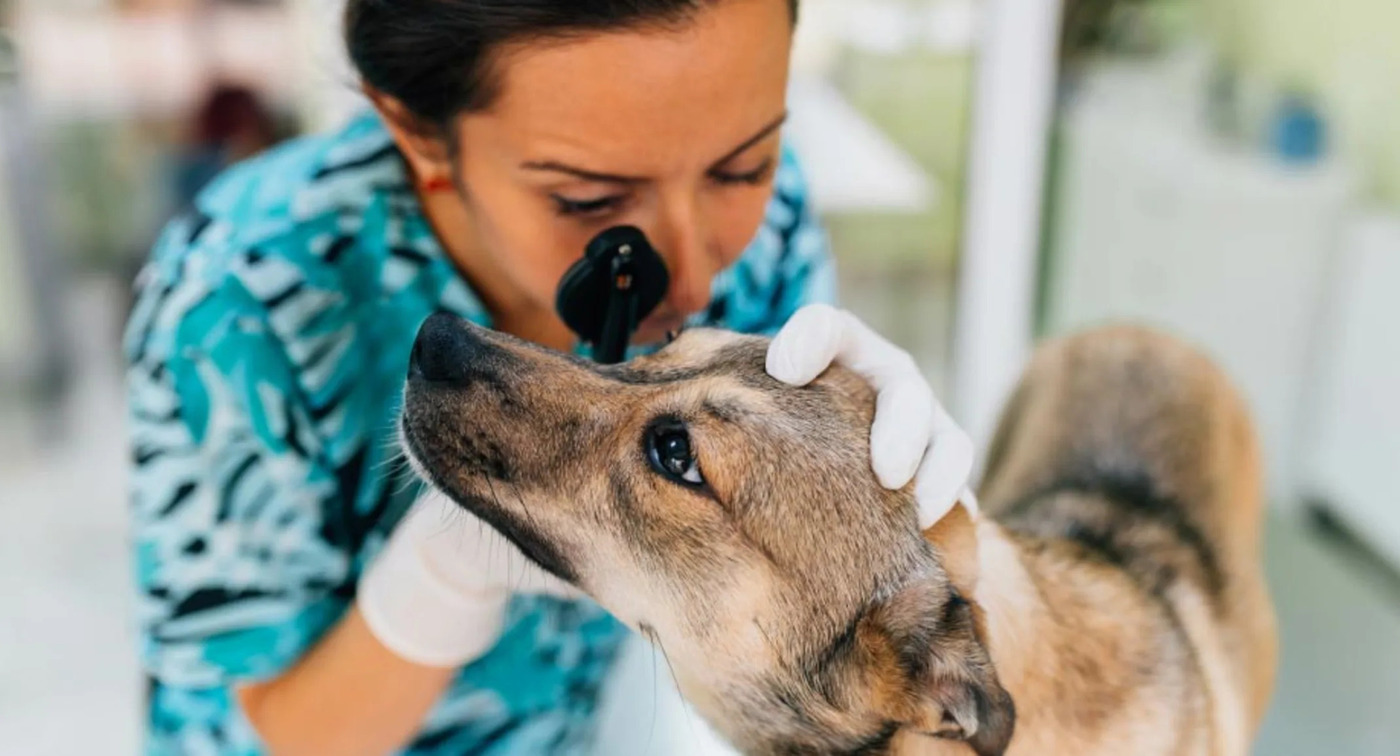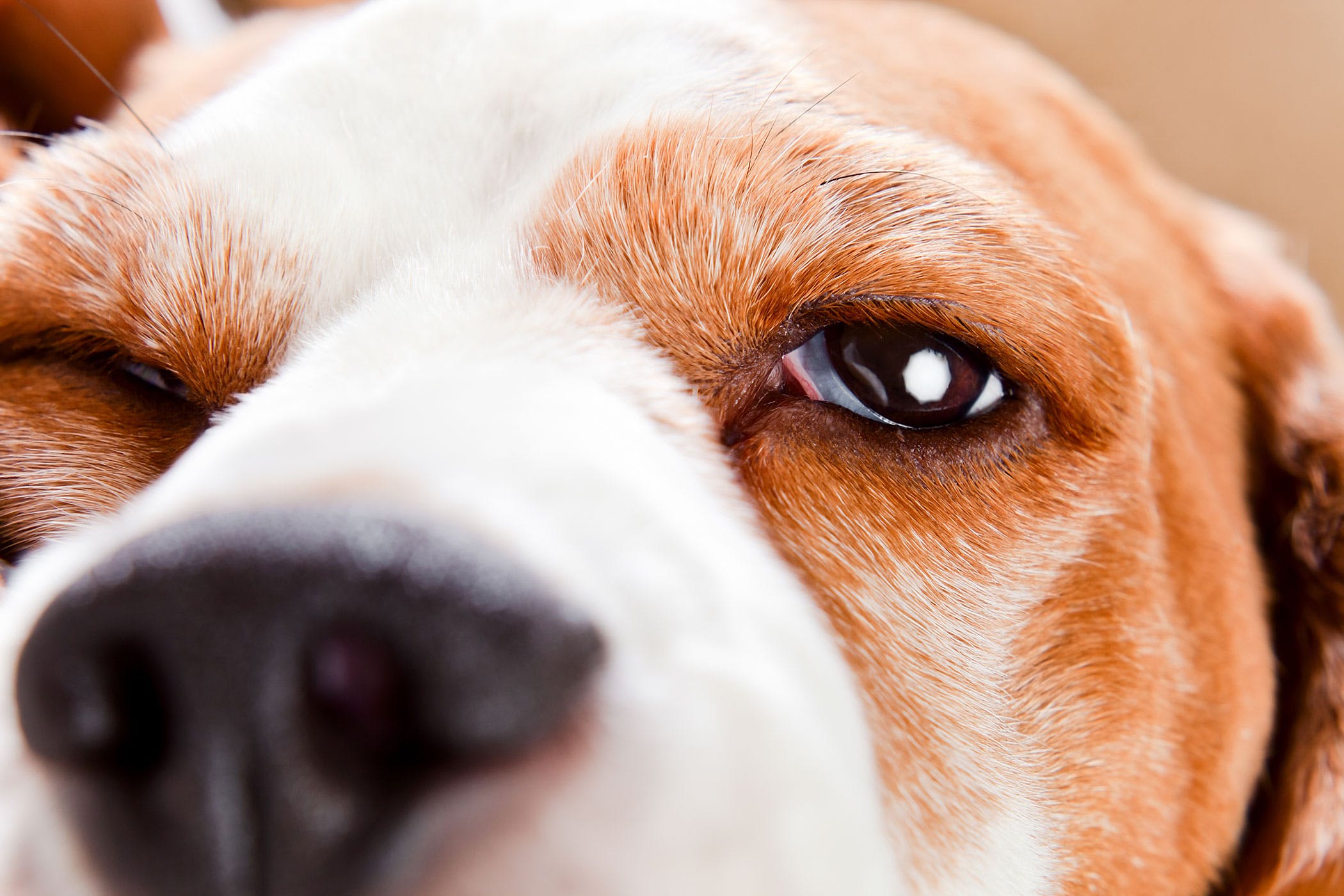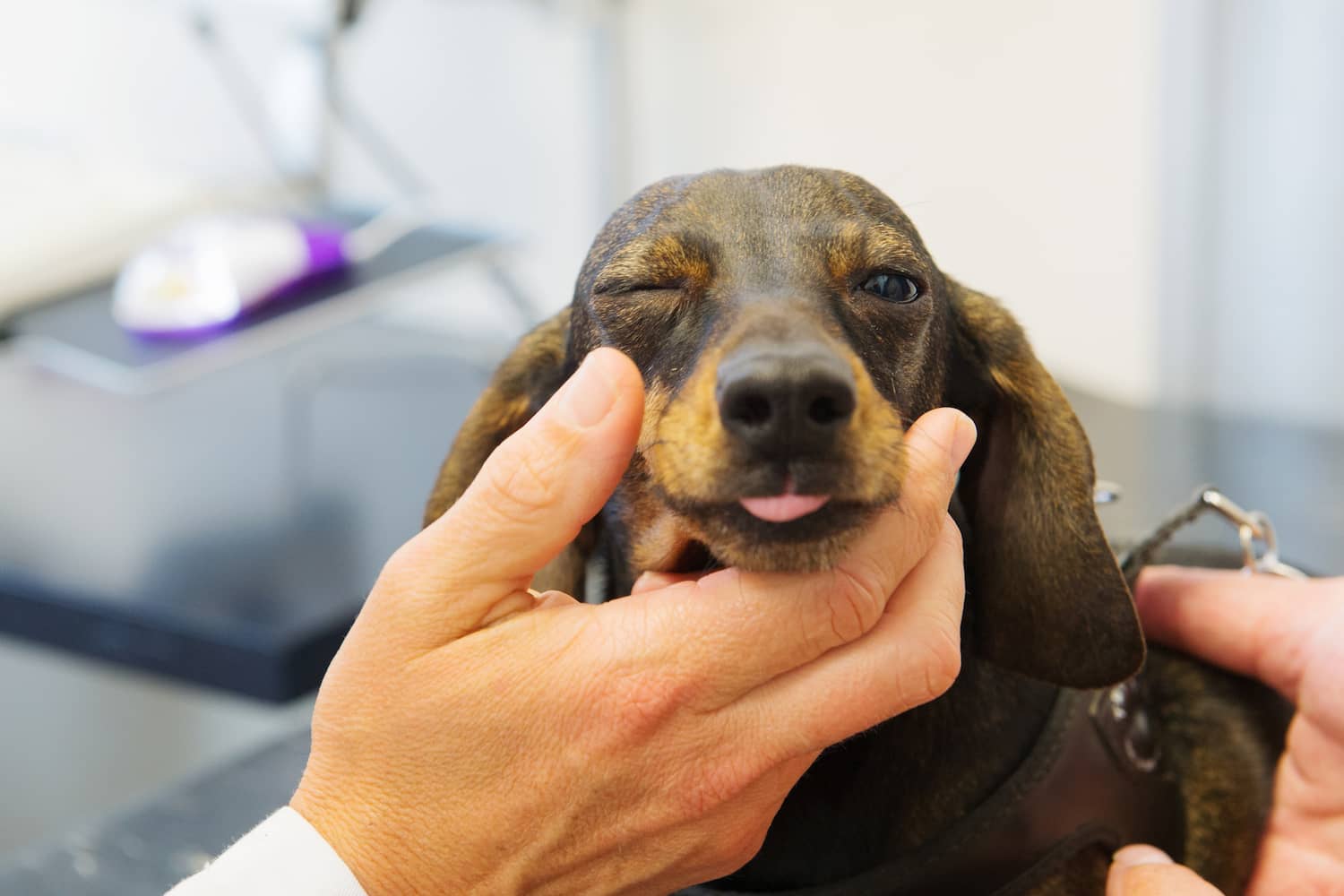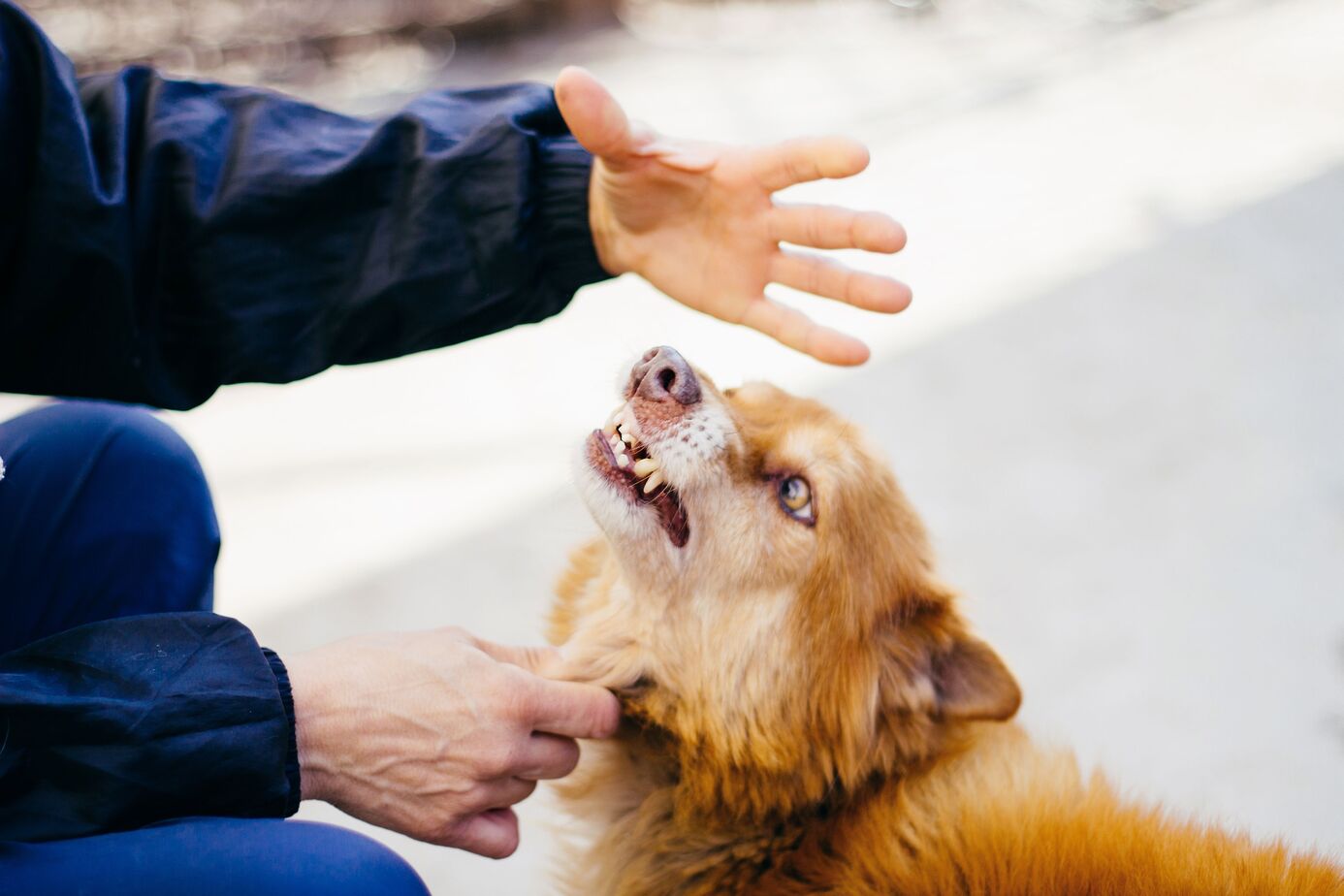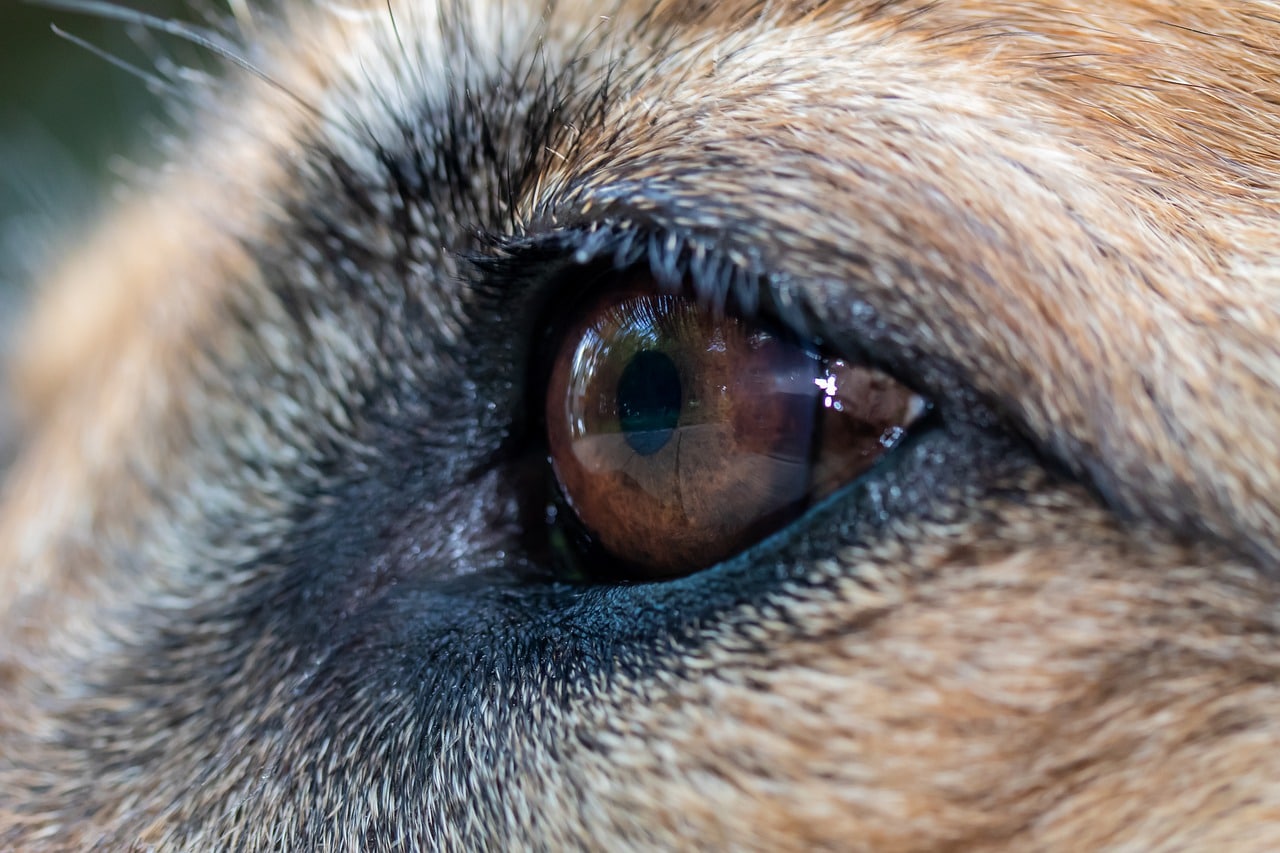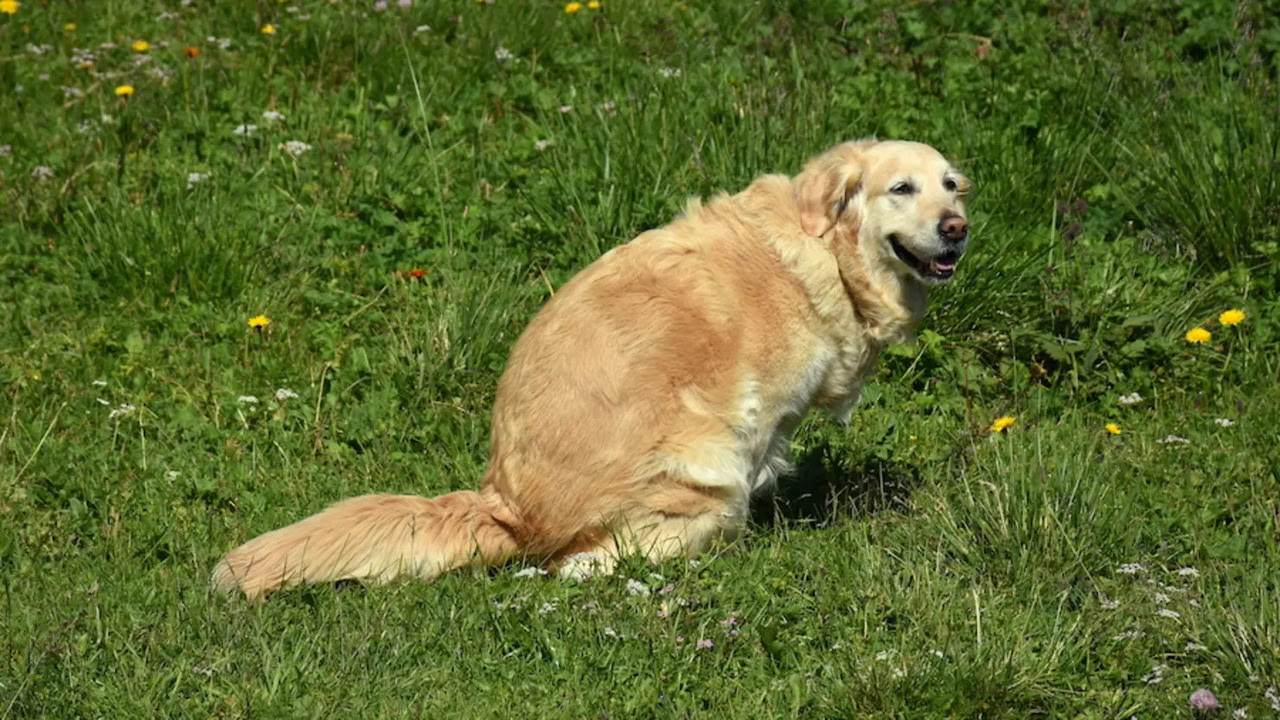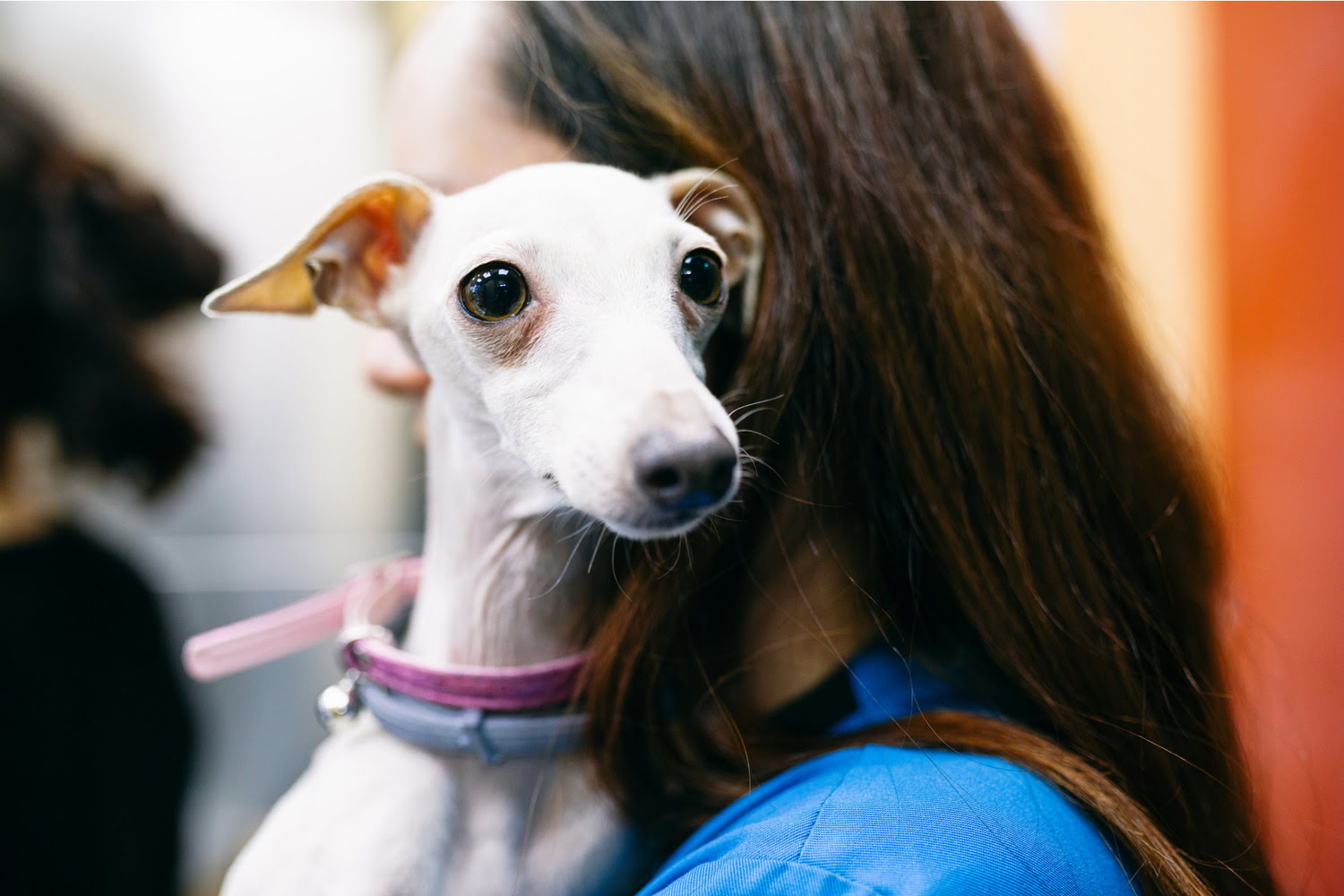Home>Health & Wellness>Common Health Issues>Eye and Ear Health>Why Is The White Part Of My Dog’s Eye Turning Brown


Eye and Ear Health
Why Is The White Part Of My Dog’s Eye Turning Brown
Published: February 11, 2024
Learn about the causes and treatment for the white part of your dog's eye turning brown. Discover tips for maintaining your pet's eye and ear health.
(Many of the links in this article redirect to a specific reviewed product. Your purchase of these products through affiliate links helps to generate commission for Pawsomeoldies.com, at no extra cost. Learn more)
Table of Contents
- Introduction
- Understanding the Anatomy of a Dog's Eye
- Common Causes of Brown Discoloration in the White Part of a Dog's Eye
- Health Conditions Associated with Brown Discoloration in a Dog's Eye
- Treatment Options for Brown Discoloration in a Dog's Eye
- When to Seek Veterinary Care for Brown Discoloration in a Dog's Eye
- Conclusion
Introduction
The eyes are often referred to as the windows to the soul, and this sentiment holds true for our beloved canine companions as well. As a dog owner, it's natural to be attentive to any changes in your furry friend's eyes, including the white part of the eye turning brown. This intriguing phenomenon can raise concerns and prompt a quest for understanding the underlying causes and potential implications for your dog's eye health.
The transformation of the white part of a dog's eye from its natural color to a brown hue can be a perplexing sight for pet owners. This alteration may manifest gradually or seemingly overnight, sparking curiosity and perhaps a tinge of worry. Understanding the reasons behind this change is crucial for ensuring the well-being of your canine companion.
In this comprehensive guide, we will delve into the intricacies of a dog's eye anatomy, explore the common causes of brown discoloration in the white part of a dog's eye, shed light on the potential health conditions associated with this phenomenon, and discuss the available treatment options. Additionally, we will outline the circumstances that warrant seeking veterinary care for brown discoloration in a dog's eye.
By gaining insight into these aspects, you will be better equipped to monitor your dog's ocular health and take proactive measures to address any concerning changes in the appearance of their eyes. Let's embark on this enlightening journey to unravel the mysteries behind the brown discoloration in the white part of your dog's eye and empower you to provide the best possible care for your furry companion.
Read more: Why Is My Dog’s Eye White
Understanding the Anatomy of a Dog's Eye
The intricate design of a dog's eye is a marvel of nature, comprising several specialized structures that work in harmony to facilitate vision and maintain ocular health. To comprehend the significance of the white part of a dog's eye turning brown, it is essential to grasp the fundamental anatomy of this vital sensory organ.
The outermost layer of the eye, known as the sclera, is responsible for providing structural support and protection to the delicate internal components. In dogs, the sclera is typically characterized by a glistening white appearance, serving as a stark contrast against the vibrant colors of the iris and the dark, circular pupil.
Beneath the sclera lies the conjunctiva, a thin, transparent membrane that covers the front surface of the eye and lines the inner surface of the eyelids. This crucial structure plays a pivotal role in safeguarding the eye against foreign particles and microbial invaders, contributing to the overall defense mechanisms of the ocular environment.
Moving inward, the cornea takes center stage as the transparent, dome-shaped structure that acts as the eye's primary refractive surface. It plays a pivotal role in focusing incoming light onto the retina, thereby initiating the visual perception process. The cornea's clarity and integrity are essential for maintaining optimal vision and ocular health in dogs.
The iris, a pigmented muscular structure, regulates the amount of light entering the eye by adjusting the size of the pupil. This dynamic mechanism enables dogs to adapt to varying light conditions, ensuring visual acuity across different environments. The distinctive coloration of the iris contributes to the individuality and charm of each dog's gaze.
Deep within the eye, the crystalline lens and the retina collaborate to process incoming visual stimuli and transmit them to the brain for interpretation. The lens facilitates the focusing of light onto the retina, while the retina, akin to a sophisticated camera sensor, captures and converts light signals into neural impulses for further processing.
Understanding the intricate interplay of these anatomical components provides a holistic perspective on the complexities of a dog's eye. This foundational knowledge serves as a springboard for exploring the potential factors contributing to the brown discoloration in the white part of a dog's eye, shedding light on the underlying mechanisms and implications associated with this intriguing phenomenon.
Common Causes of Brown Discoloration in the White Part of a Dog's Eye
The emergence of brown discoloration in the white part of a dog's eye can stem from various factors, each warranting attention and consideration. Understanding these common causes is pivotal in unraveling the enigma behind this intriguing phenomenon and guiding appropriate measures to safeguard your dog's ocular health.
-
Pigmentary Changes: Over time, aging can bring about subtle alterations in a dog's eye pigmentation, leading to the gradual development of brown spots or patches on the sclera. This natural aging process, akin to the graying of fur, may manifest as a benign transformation, often devoid of any underlying health concerns.
-
Episcleritis: Episcleritis, characterized by inflammation of the episclera, a thin layer situated between the conjunctiva and the sclera, can induce localized discoloration in the affected area. This inflammatory response may present as a reddish-brown hue on the white part of the eye, accompanied by mild discomfort or irritation.
-
Conjunctival Melanosis: In some instances, the presence of melanocytes within the conjunctiva can lead to the formation of pigmented lesions, resulting in brown discoloration. While these melanocytic changes are typically benign, periodic monitoring is advisable to track any alterations in size or appearance.
-
Exposure to Environmental Irritants: Prolonged exposure to environmental irritants or pollutants can instigate ocular irritation and inflammation, potentially culminating in localized discoloration of the sclera. This can manifest as a brownish tint in the affected area, signaling the need for environmental modifications and ocular protection.
-
Corneal Pigmentation: Certain breeds, such as the Siberian Husky and the Alaskan Malamute, are predisposed to developing corneal pigmentation, characterized by the deposition of brown pigment within the corneal tissue. While this primarily affects the cornea, it can impart a subtle brownish appearance to the adjacent scleral region.
-
Ocular Trauma or Injury: Traumatic incidents, including corneal abrasions or foreign body penetration, can elicit localized discoloration in the white part of the eye. The resultant tissue damage and healing processes may lead to the formation of brownish areas, necessitating prompt veterinary evaluation and intervention.
By familiarizing yourself with these common causes of brown discoloration in the white part of a dog's eye, you can cultivate a proactive approach to monitoring your canine companion's ocular well-being. This awareness empowers you to discern normal age-related changes from potential underlying issues, facilitating timely intervention and ensuring the preservation of your dog's visual health.
Health Conditions Associated with Brown Discoloration in a Dog's Eye
The emergence of brown discoloration in the white part of a dog's eye can serve as a visual indicator of underlying health conditions that warrant attention and proactive management. While certain instances of discoloration may stem from benign factors, it is crucial to remain vigilant and consider the potential implications of this phenomenon in the context of broader health concerns.
Melanoma
One of the primary health conditions associated with brown discoloration in a dog's eye is ocular melanoma. This malignancy can manifest within the eye, including the sclera, and give rise to pigmented lesions that impart a brownish hue. Ocular melanomas, while relatively rare, can pose significant health risks and necessitate prompt veterinary evaluation and intervention. Monitoring any changes in the appearance of the eye, including alterations in pigmentation, is essential for early detection and timely management of ocular melanoma.
Read more: Why Does My Dog Have A White Spot In His Eye
Uveitis
Uveitis, characterized by inflammation of the uveal tract within the eye, can induce changes in ocular pigmentation, potentially leading to brown discoloration in the white part of the eye. This inflammatory condition can arise from various underlying causes, including infections, autoimmune disorders, and traumatic injuries. Uveitis demands thorough diagnostic assessment and targeted treatment to alleviate inflammation and mitigate potential complications, underscoring the importance of promptly addressing any discoloration indicative of this condition.
Glaucoma
In some cases, the onset of glaucoma, a condition marked by elevated intraocular pressure and subsequent damage to the optic nerve, can prompt alterations in ocular pigmentation. The development of brown discoloration in the white part of the eye may coincide with the progression of glaucomatous changes, signaling the need for comprehensive ocular examinations and pressure assessments. Timely identification and management of glaucoma are critical for preserving vision and mitigating the impact of this potentially sight-threatening condition.
Systemic Diseases
Certain systemic diseases, such as endocrine disorders and immune-mediated conditions, can manifest ocular manifestations, including changes in ocular pigmentation. Endocrine imbalances, notably those affecting the thyroid and adrenal glands, can exert influence on ocular tissues, potentially contributing to alterations in eye coloration. Similarly, immune-mediated conditions may elicit inflammatory responses within the eye, culminating in discoloration of the sclera. Addressing the underlying systemic health concerns is paramount in managing ocular manifestations and promoting overall well-being.
By recognizing the potential association between brown discoloration in a dog's eye and these health conditions, pet owners can prioritize proactive monitoring and seek veterinary guidance when observing such changes. Early detection and targeted intervention play a pivotal role in safeguarding a dog's ocular health and overall vitality, underscoring the significance of remaining attuned to visual cues that may signify underlying health challenges.
Treatment Options for Brown Discoloration in a Dog's Eye
Addressing brown discoloration in a dog's eye necessitates a tailored approach that aligns with the underlying cause and the dog's overall ocular health. The treatment options for this intriguing phenomenon encompass a spectrum of interventions aimed at mitigating underlying health concerns, alleviating discomfort, and preserving visual function.
Read more: Why Does My Dog Have A Bump By Her Eye
Veterinary Evaluation
Upon observing brown discoloration in a dog's eye, seeking prompt veterinary evaluation is paramount. A comprehensive ocular examination, encompassing visual assessment, intraocular pressure measurement, and specialized diagnostic tests, facilitates the identification of potential underlying conditions contributing to the discoloration. This diligent evaluation serves as the cornerstone for formulating an effective treatment strategy tailored to the dog's specific needs.
Targeted Therapies
The treatment approach for brown discoloration in a dog's eye hinges on the precise diagnosis and the nature of the underlying cause. In instances where inflammatory conditions, such as episcleritis or uveitis, are identified, targeted therapies, including anti-inflammatory medications and ocular lubricants, may be prescribed to alleviate discomfort, reduce inflammation, and restore ocular equilibrium. These therapeutic modalities aim to address the root cause of the discoloration and promote ocular healing.
Surgical Interventions
In cases where structural abnormalities or neoplastic growths contribute to the brown discoloration, surgical interventions may be warranted. Ocular surgeries, ranging from excision of abnormal tissue to advanced procedures for addressing intraocular malignancies, are tailored to the specific pathology and aim to mitigate the impact of the underlying condition on the dog's ocular health. Surgical interventions are often complemented by post-operative care and close monitoring to optimize the dog's recovery and long-term ocular well-being.
Ongoing Monitoring and Management
Following the initiation of treatment, diligent monitoring of the dog's ocular health is essential. This entails regular follow-up appointments with the veterinarian to assess treatment response, monitor any changes in the discoloration, and address any emerging concerns. Additionally, adherence to prescribed medications, environmental modifications, and lifestyle adjustments, as recommended by the veterinarian, plays a pivotal role in supporting the dog's ocular recovery and overall wellness.
Read more: Why Does My Dog’s Eye Reflect?
Holistic Supportive Care
In conjunction with targeted treatments, holistic supportive care, including nutritional optimization, environmental modifications to minimize ocular irritants, and lifestyle adjustments, can contribute to the dog's ocular health. This comprehensive approach aims to create an environment conducive to ocular healing and overall well-being, complementing specific treatment modalities and fostering the dog's comfort and vitality.
By embracing a multifaceted treatment approach tailored to the dog's unique needs, pet owners can optimize the management of brown discoloration in their dog's eye, promoting ocular health, and enhancing the dog's quality of life. This comprehensive strategy underscores the significance of proactive veterinary care and individualized interventions in addressing ocular concerns, reaffirming the commitment to safeguarding the visual well-being of our cherished canine companions.
When to Seek Veterinary Care for Brown Discoloration in a Dog's Eye
Prompt veterinary care is imperative when observing brown discoloration in a dog's eye, as it serves as a visual cue that necessitates thorough evaluation and targeted intervention. Recognizing the optimal timing for seeking veterinary guidance empowers pet owners to address potential underlying health concerns and prioritize the ocular well-being of their canine companions.
-
Sudden Onset or Rapid Progression: If the brown discoloration in the white part of the dog's eye manifests suddenly or exhibits rapid progression, immediate veterinary attention is warranted. Abrupt changes in ocular pigmentation may signify acute inflammatory processes, traumatic injuries, or emergent conditions that mandate swift evaluation and intervention.
-
Associated Ocular Symptoms: Concurrent ocular symptoms, such as excessive tearing, squinting, ocular discharge, or visible discomfort, accentuate the urgency of seeking veterinary care. These manifestations can provide valuable insights into the nature of the underlying condition and guide the formulation of an effective treatment strategy.
-
Behavioral Changes: Observing alterations in the dog's behavior, including reluctance to engage in activities that typically involve visual stimuli or signs of ocular discomfort, underscores the need for veterinary assessment. Behavioral cues can offer crucial indications of ocular distress and prompt proactive management.
-
Progressive Alterations: If the brown discoloration exhibits progressive alterations in size, shape, or intensity, veterinary evaluation is essential. Monitoring any changes in the appearance of the discoloration enables early detection of potential underlying health conditions and facilitates timely intervention to mitigate their impact.
-
Underlying Health Conditions: Dogs with pre-existing health conditions, such as systemic diseases or ocular abnormalities, may be predisposed to ocular manifestations, including changes in eye pigmentation. In such cases, vigilant monitoring and proactive veterinary care are paramount to address any emerging ocular concerns and optimize the dog's overall health.
-
Age-Related Changes: While subtle age-related changes in ocular pigmentation are natural, significant alterations warrant veterinary assessment. Distinguishing between benign age-related changes and potential health implications requires professional evaluation to ensure the dog's ocular health is safeguarded.
By remaining attuned to these indicators and promptly seeking veterinary care when observing brown discoloration in a dog's eye, pet owners can play a proactive role in preserving their canine companion's ocular health and overall well-being. This proactive approach aligns with the commitment to providing attentive and compassionate care for our cherished furry friends, underscoring the significance of timely veterinary intervention in addressing ocular concerns.
Conclusion
In conclusion, the intriguing phenomenon of the white part of a dog's eye turning brown can evoke a spectrum of emotions and prompt a quest for understanding the underlying causes and potential implications for a dog's eye health. Through our comprehensive exploration, we have gained valuable insights into the intricate anatomy of a dog's eye, the common causes of brown discoloration, the associated health conditions, treatment options, and the pivotal significance of seeking veterinary care when observing such changes.
The anatomy of a dog's eye is a marvel of nature, comprising specialized structures that work in harmony to facilitate vision and maintain ocular health. Understanding the fundamental components, including the sclera, conjunctiva, cornea, iris, lens, and retina, provides a holistic perspective on the complexities of a dog's eye. This foundational knowledge serves as a springboard for exploring the potential factors contributing to the brown discoloration in the white part of a dog's eye, shedding light on the underlying mechanisms and implications associated with this intriguing phenomenon.
The common causes of brown discoloration in a dog's eye encompass a spectrum of factors, including pigmentary changes, episcleritis, conjunctival melanosis, exposure to environmental irritants, corneal pigmentation, and ocular trauma or injury. By familiarizing ourselves with these causes, we can cultivate a proactive approach to monitoring our canine companions' ocular well-being, empowering us to discern normal age-related changes from potential underlying issues and facilitating timely intervention.
Furthermore, we have delved into the potential health conditions associated with brown discoloration in a dog's eye, including ocular melanoma, uveitis, glaucoma, and systemic diseases. Recognizing the potential association between brown discoloration in a dog's eye and these health conditions enables pet owners to prioritize proactive monitoring and seek veterinary guidance when observing such changes, underscoring the importance of early detection and targeted intervention in safeguarding a dog's ocular health and overall vitality.
Addressing brown discoloration in a dog's eye necessitates a tailored approach that aligns with the underlying cause and the dog's overall ocular health. The treatment options encompass veterinary evaluation, targeted therapies, surgical interventions, ongoing monitoring and management, and holistic supportive care, emphasizing the multifaceted nature of addressing ocular concerns and promoting the well-being of our cherished canine companions.
Finally, recognizing the optimal timing for seeking veterinary guidance empowers pet owners to address potential underlying health concerns and prioritize the ocular well-being of their canine companions. By remaining attuned to the indicators and promptly seeking veterinary care when observing brown discoloration in a dog's eye, pet owners can play a proactive role in preserving their canine companion's ocular health and overall well-being, underscoring the significance of timely veterinary intervention in addressing ocular concerns.
In essence, our journey through the intricacies of the white part of a dog's eye turning brown has equipped us with a deeper understanding of this captivating phenomenon, empowering us to provide attentive and compassionate care for our cherished furry friends. By embracing proactive monitoring, seeking veterinary guidance, and advocating for the ocular well-being of our canine companions, we reaffirm our commitment to safeguarding their visual health and enhancing their quality of life.



